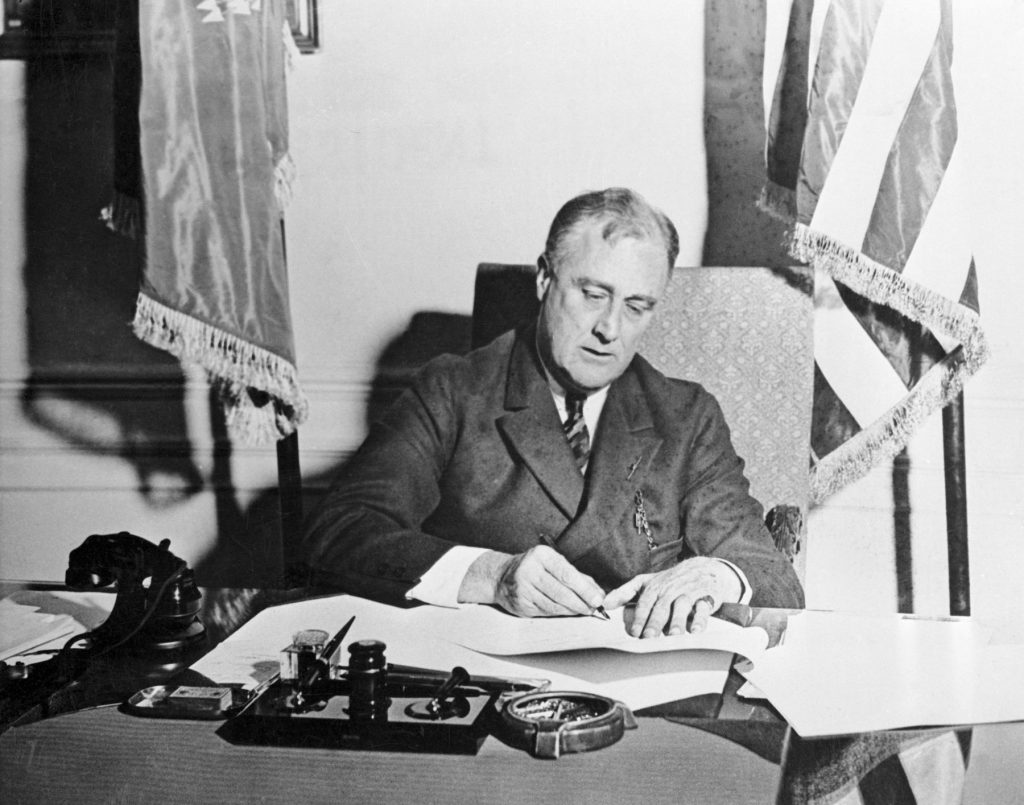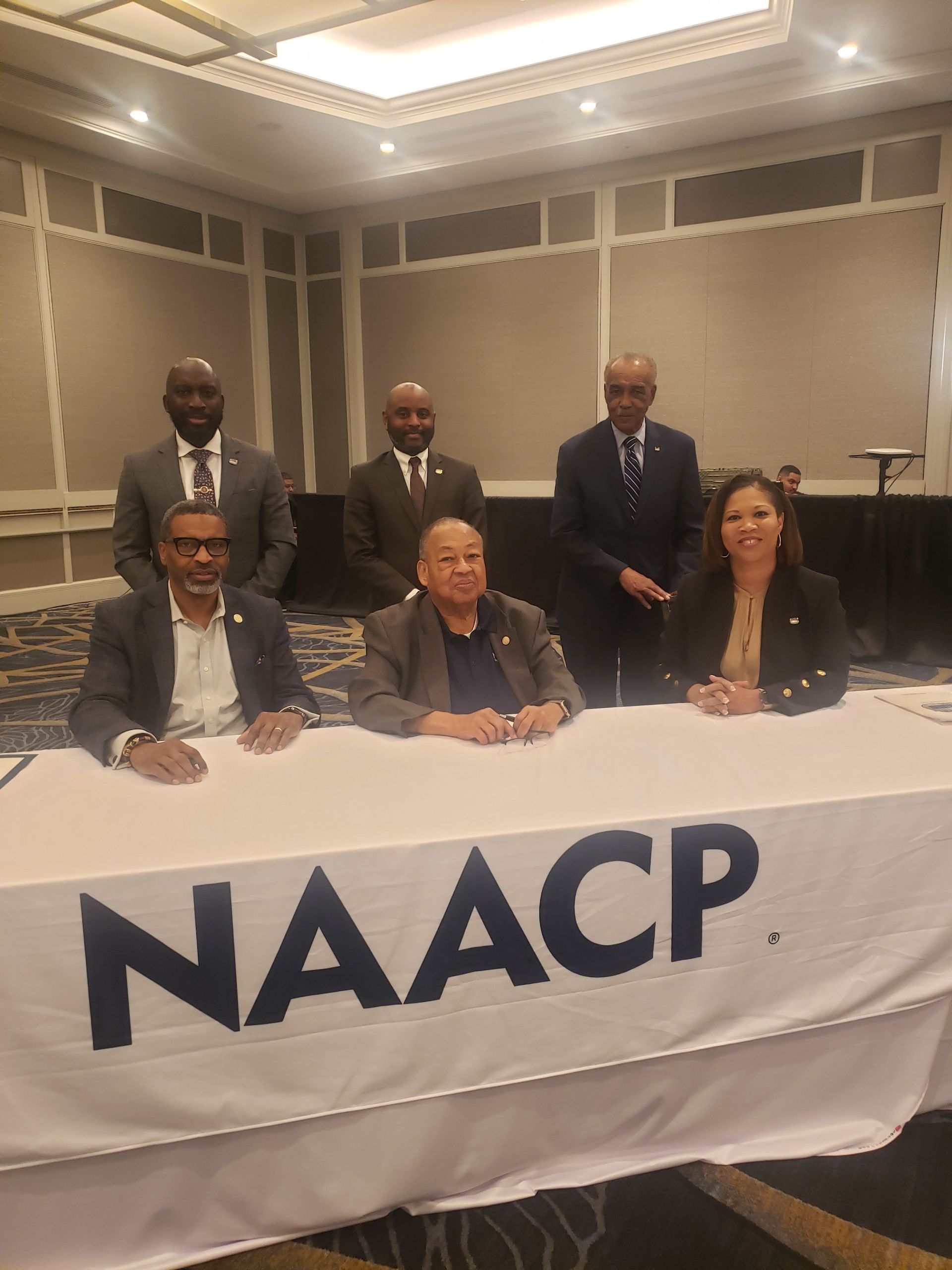The Next New Deal Must Be for Black Americans, Too
If Joe Biden hopes to enact an ambitious recovery agenda modeled on the New Deal, he must confront its racist legacy.

For many Black and brown Americans, 2021 brought renewed optimism about advancing a racial justice agenda. With a new presidential administration, the racist despot will soon be removed, and the first African, Asian, Caribbean American and female vice president sworn in. Congress will be fully under Democratic control, and with a new mandate for change after a year of anti-racist uprisings that were among the largest protests in American history. Even the horrifying attack on the Capitol offered some rays of hope that honest conversations about the white supremacist roots of the U.S. are possible. As the Covid-19 vaccine began its slow but steady rollout, cheery forecasts emerged for a “ v-shaped recovery ” that could pull the economy out of an economic crisis often compared to the Great Depression.
In looking forward, Democratic leaders including President-elect Joe Biden , often harken back to the federal government’s response to that period — the New Deal. But for Black Americans, the New Deal left an ambivalent legacy that does not offer an easy template for change. Many argue it deepened racial inequalities — widening gaps in employment, education and wealth between white and Black Americans. Those looking to hold the Biden-Harris administration accountable for its commitment to advancing racial justice need to understand how and why the New Deal left so many behind, so its history is not repeated.
Set off by the 1929 stock market crash, the Great Depression was the longest and largest economic slump in American history, lasting a decade and ending in the run-up to World War II. Similarly, as the economy ground to a halt in March 2020, the U.S. experienced one of the steepest economic downturns since WWII. What seems to unite the two periods even more than their economic impacts is by whom they were most felt. The Great Depression hit African Americans harder than any other group. Black Americans were most likely to be laid off, evicted, have their businesses shuttered and see their homes foreclosed. In 2020, the same seemed to hold true, as Black and Latinx Americans suffered the highest coronavirus infection and death rates.
Given their dire circumstances, Black Americans should have been the largest beneficiaries of federal government largess that followed the Great Depression, known as the New Deal. Instead, they benefited least.
“I pledge you, I pledge myself, to a new deal for the American people,” Franklin D. Roosevelt proclaimed as he accepted the Democratic nomination for president in 1932. Upon election, he got to work. Roosevelt instituted a slate of sweeping new initiatives and an alphabet soup of federal agencies, including the Securities and Exchange Commission and Federal Deposit Insurance Corporation , for more oversight and regulation of banks. Various public works agencies, like the Civilian Conservation Corps , Public Works Administration and National Youth Administration put millions of people back to work.
They established labor protections and set in place the very backbone of the modern welfare state, including protections and funding for unemployment insurance, social security and aid for dependent children.
The Home Owners’ Loan Corporation (HOLC), and later the Federal Housing Administration (FHA), extended mortgage guarantees that propped up a floundering housing market and put homeownership within reach of millions. The 1937 Housing Act enabled local authorities to clear dilapidated slums and construct public housing. As soldiers, Black and white, returned home from WWII to a housing crisis that left many doubled up in overcrowded urban housing, Roosevelt expanded FHA loan programs. Congress also passed the Servicemen’s Readjustment Act, known as the GI Bill, to assist returning veterans in obtaining jobs, education and housing.
New Deal programs are rightly credited for having helped to pull the U.S. through one of the toughest economic periods in its history. It provided basic security for unions, farm and factory workers — old and young, men and women — that many take for granted today. It kept major industries from collapse, and built roads, bridges and parks that are still in use. But it was not a new deal for all.
Many African Americans benefited from New Deal programs, and took advantage of the slate of opportunities that made few explicit racial distinctions in access. But its policies also often failed to challenge the racist status quo, allowing white Americans to become their primary, and sometimes their sole, beneficiaries.
Southern Dixiecrats holding key positions in Congress stood together to ensure that programs benefitted white Southerners, but did not upset Jim Crow. They fought for local and state control that all but assured racially uneven program administration. They successfully excluded professions dominated by African Americans , including domestic and agricultural workers, from employment, unemployment and social security benefits.
Housing programs that could have benefitted African Americans living in some of the most overcrowded and dilapidated urban housing instead reinforced racial segregation. With redlining , FHA standards for insuring mortgages required private lenders to designate neighborhoods that were non-white, racially mixed or had multifamily dwellings as “high risk.” Across the U.S., 98% of FHA-insured loans issued between 1934 and 1962 went to white buyers, largely in suburbs. Similar standards also guided the distribution of Veterans Administration home loans, which alongside other GI benefits, went almost exclusively to white veterans. Federal housing policies led to racist slum clearance practices that uprooted Black Americans and resettled them in segregated and underfunded public housing. This concentrated and entrenched Black poverty and disadvantage.
Together, the New Deal and President Harry Truman’s ongoing support of it, known as the Fair Deal, constituted a period when, as historian Ira Katznelson put it, “ affirmative action was white.” Their policies boosted white homeownership, wealth and opportunity, while leaving African Americans further behind. They formed the foundation of middle-class postwar prosperity, with new single-family homes and well-performing schools in communities built on racial exclusion. In segregated suburbs, white Americans fashioned ideas about the American Dream and a myth of meritocracy that was, in fact, buttressed by an unprecedented federal welfare program.
How will the Biden-Harris administration make sense of this tangled legacy in pushing its ambitious agenda to “build back better” and “rebuild the middle class,” while addressing racial justice issues?
On the campaign trail, Biden said he did not support the Green New Deal , legislation introduced in Congress by Representative Alexandria Ocasio-Cortez and Senator Edward J. Markey to tackle climate change. While not offering specific policy prescriptions, the Green New Deal lays out principles for how massive public works and employment projects can prioritize racial justice. Calling out the federal government for excluding communities of color from the benefits of the New Deal and postwar prosperity, its inclusive growth strategy aims to stop, prevent and repair historic injustices. It argues that policies should be developed in partnership with — and prioritize — economic, social and environmental benefits for frontline and vulnerable communities.
Still, the Biden-Harris agenda suggests the possibility of New Deal-level investments in housing, infrastructure, health care and the economy. It also appears to take racial equity seriously, with specific plans for Black Americans, Indigenous Americans, Latinos and other economically and socially marginalized groups.
But the New Deal taught Black America that racial justice goals are often sacrificed when ambitious political agendas face tough odds. Even if Biden, who has a mixed history in promoting racial justice, wanted to, he could not go it alone. FDR’s success lay in building a New Deal Coalition forged among Democratic leaders, labor unions, blue-collar workers, farmers, white Southerners and people of color. The compromises that this diverse coalition made, however, often left the latter further behind.
Backlash to the Biden-Harris platform is inevitable; not only from Republicans, but also from the Democratic establishment of which the president- and vice president-elect are a part. And while the Green New Deal forged a diverse coalition committed to pushing its goals, it’s not clear that the Biden-Harris plan has such a ready coalition. Congressional Republicans have shown little remorse over the divisive politics of the last four years. Mainstream Democrats can’t be counted on for their support either. And some of Biden’s middle-of-the-road cabinet picks, such as Mayor Marty Walsh for labor secretary and Mayor Pete Buttigieg for transportation secretary, raise doubts about whether large-scale social and economic reform proposals will emerge.
Just days ago, we got a taste of where the administration is headed in Biden’s $1.9 trillion coronavirus relief plan. The plan repeatedly points out the virus’s disparate impact on Black and Latinx workers, businesses, families and communities, but lacks specificity about how its plans would address those disparities. While it acknowledges the higher rates of eviction and foreclosure among people of color with a fraction of the wealth of white families, for instance, it offers no guidance on the distribution of its proposed $30 billion in rental assistance. Biden’s long-term housing proposals , such as those designed to “end redlining” and “eliminate local and state housing regulation that perpetuate discrimination,” as the campaign stated, are even more promising, but equally vague on implementation. To make headway on plans to “eliminate local and state housing regulations that perpetuate discrimination” and “hold financial institutions accountable for discriminatory practices in the housing market” will require strong political will from the top, and the engagement of advocates beyond Congress.
As the details are hammered out, Biden should borrow from the Green New Deal to ensure that communities most affected by the policies and historically excluded from their benefits become collaborators in their construction, and the primary and explicit beneficiaries of their outcomes. Policies must also include safeguards to ensure that federal, state and local officials apply them equitably. And as Black Lives Matter protesters made clear this summer, racial justice cannot be a bargaining chip traded for other political gains.
Putting in place such protections is not, as the right often suggests, playing identity politics. Rather, it acknowledges those who are most often forgotten and harmed by policies designed to “lift all boats” and who are still suffering the impacts of the last New Deal forged at their expense.
CREDITS: Willow Lung-Amam / Bloomberg
The post The Next New Deal Must Be for Black Americans, Too appeared first on National Association of Real Estate Brokers.


